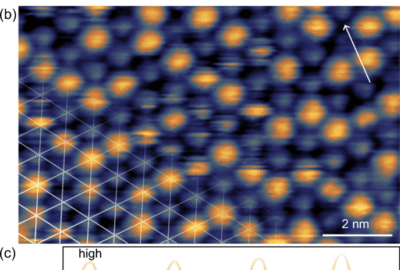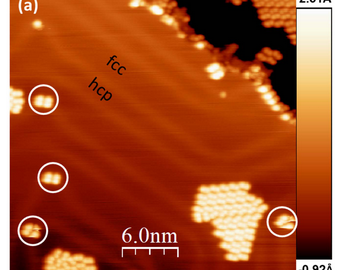publications, Réseau
Revealing conductance variation of molecular junctions based on an unsupervised data analysis approach
For single-molecule electrical junction conductance measurements the data analysis can be a key challenge because of the large datasets and large stochastic variation in junction conformation from one junction formation cycle to the next. Here, a data sorting algorithm was used to analyze the most dominant conductance groups for four molecular systems. The algorithm was applied to data sorting of molecular junctions repetitively formed during STM current-distance (I–s) retraction traces. The data was recorded using the STM I(s) technique to form molecular junctions, which avoids direct contact between the gold STM tip and gold substrate. The algorithm has been employed to identify different dominant conductance features for two saturated molecular bridges and two conjugated molecular bridges. The former molecular targets featured thiolmethyl and isothiocyanate anchoring groups on each respective end of the polymethylene molecular bridge, while the conjugated molecular wires featured thiol anchoring groups. In each case the sorting algorithm is able to identify two main junction conductance groups related to differing molecular junction configurations. This algorithm is demonstrated to effectively sort and rationalize complex molecular junction formation datasets, where junction formation probably can be relatively low, and thereby shows potential to quantify hidden features in single-molecule charge transport data.
Shuhui Tao, Qian Zhang, Sylvain Pitie, Chenguang Liu, Yinqi Fan, Chun Zhao, Mahamadou Seydou, Yannick J. Dappe, Richard J. Nichols, Li Yang Electrochimica Acta, 2023 doi
Comments are closed






